Discover effective and humane methods to remove a bird from your garage without causing harm or undue stress.
Discovering a bird in your garage can be a surprising event, often leaving homeowners unsure of how to handle the situation. The key to safely removing a bird from your garage involves a combination of patience, strategy, and a fundamental understanding of bird behavior.
This article will guide you through a simple, step-by-step process to help the bird find its way out without causing harm to itself or your property. From creating a clear exit path to using bird-friendly deterrents, you’ll find all the necessary details here to resolve your feathery situation with ease.
Key takeaways:
- Understand why birds enter garages and how to deter them.
- Birds in garages can pose safety risks and cause property damage.
- Create clear exit paths for birds to leave the garage.
- Use gentle methods to trap and release birds if necessary.
- Remove nests and take preventative measures to keep birds out.
Understanding Why Birds Enter & Nest in Your Garage
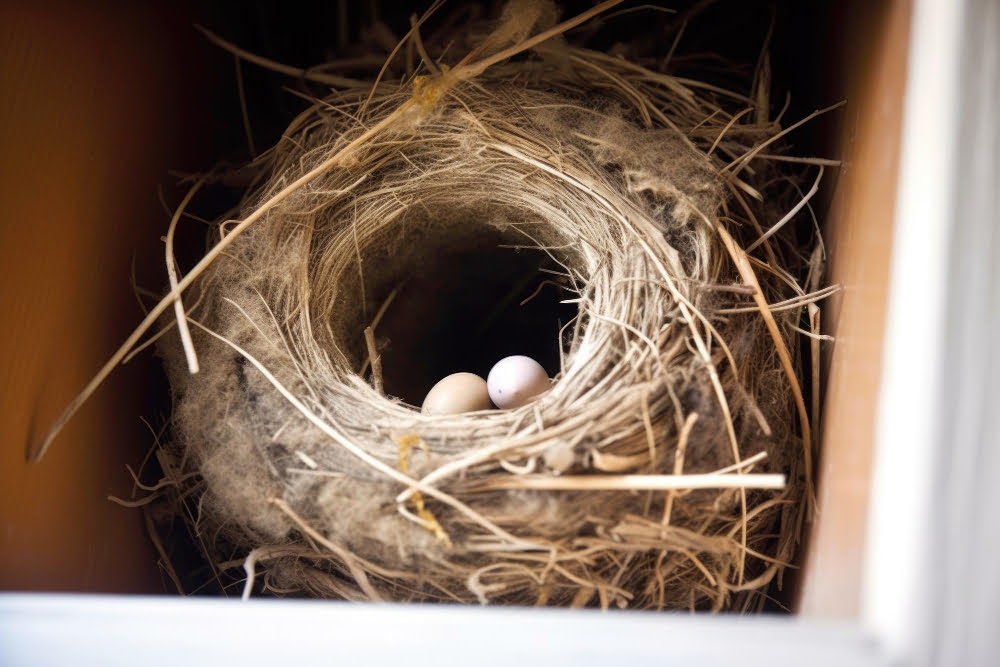
Birds, much like other wildlife, are drawn to garages as they provide a seemingly safe and sheltered space, away from predators and harsh weather conditions. Here they can easily build a nest, especially in the absence of human intervention. A garage also provides easy access to food sources, such as garbage bins or pet food containers, further making it an attractive nesting spot.
Other factors contributing to this include the surprisingly mimicked natural environment; the rafters found in many garages can positively resemble the branches of trees. Furthermore, the clamor and hustle of urban life can scare birds towards quieter residential regions, such as your garage.
Recognition of these factors provides a basis for solutions, informing changes to your garage setting that may help deter birds from nesting.
The Dangers of Birds in Garage: Safety, Disease, Property Damage
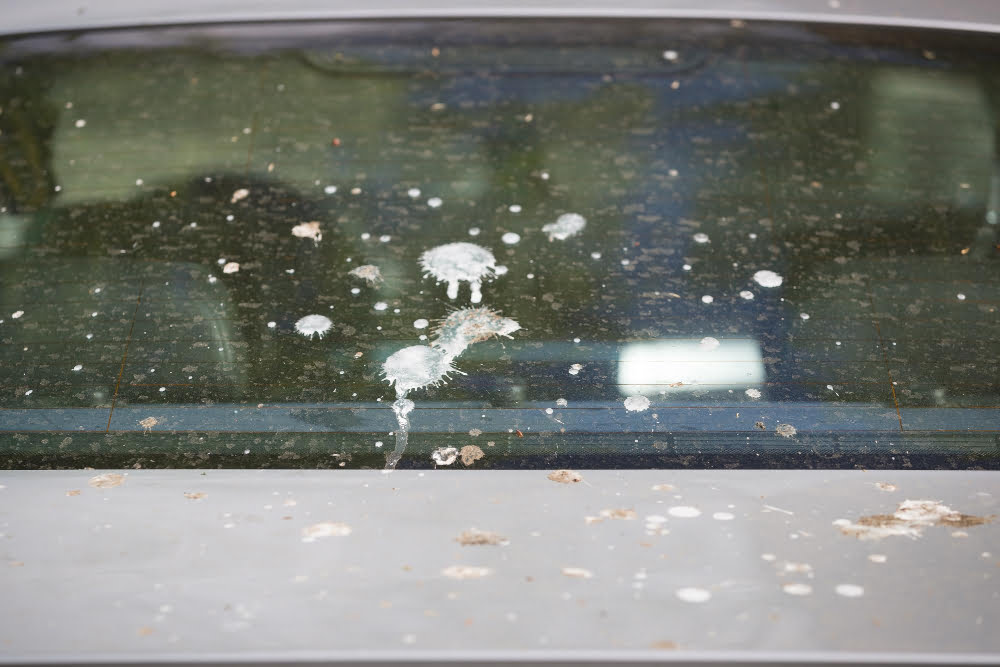
Birds residing in your garage can pose a set of unforeseen complications. Primarily, bird droppings are hazardous; their fecal matter can contain bacteria and fungal spores that lead to diseases such as histoplasmosis and cryptococcosis. Additionally, droppings are corrosive and can cause significant damage to your car paint if not attended to immediately.
Feathers and nesting materials are another concern. These can clog drains, interfere with electrical wiring, or even incite allergies in some individuals. It’s also worth considering the inherent safety risks. Startled birds may fly erratically, potentially leading to injuries, particularly if children are nearby.
Often overlooked is the fact that bird presence might attract predators such as raccoons, which can cause more extensive damage to your property. Therefore, addressing a bird problem promptly and effectively is fundamental to maintaining a safe and sane garage environment.
Creating an Opening for Birds to Exit
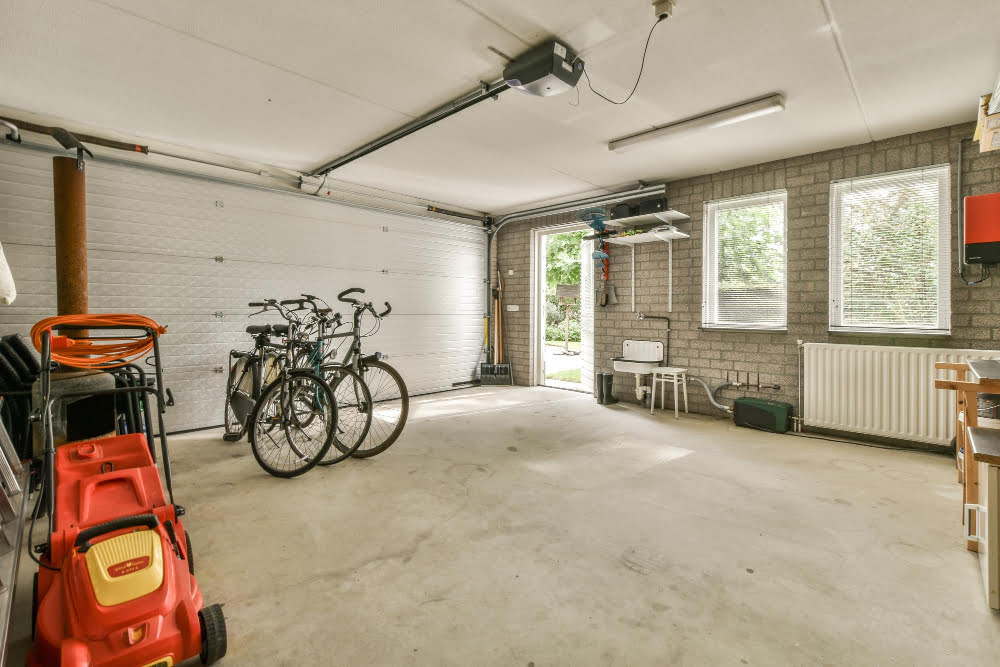
Efficient and safe bird removal involves opening doors and windows whenever possible. It’s important to strike a balance here. Note that smaller openings may be ideal as they present a visible exit without offering too many confusing escape routes.
To deploy this method properly, follow these steps:
- Identify and open the largest door or window that leads directly outside.
- Dim the lights or make the interior as dark as possible. Birds are naturally inclined to fly towards light, so they’ll go towards the open exit.
- Avoid standing near the exit, as your presence may deter the bird from using it.
- Give the bird some time to realize it has a safe way out, most will take the hint and fly out themselves when given the chance.
Remember, it’s critical to stay patient and calm during this process. Harsh actions can spook the bird, making it less likely to follow the intended route.
Trapping and Safely Catching the Bird

If the bird is not using the provided exits, consider a more direct approach: catching and releasing the bird yourself. Trapping wildlife may require a permit in your locality, so check the regulations before proceeding. Acquire a proper bird net which is designed to be gentle on birds or opt for a bird trap available at most hardware stores. Before any attempts, put on gloves to protect both yourself and the bird.
First, try to steer the bird towards a clear, open exit using the net. Don’t swing the net wildly, instead, guide the bird gently. If the bird’s flight appears erratic or weak, this may indicate injury or exhaustion. Approach it slowly, lower at ground level, and loosely cover it with the net. Scoop the bird into a box with ventilation, then release outdoors.
Above all, patience is pivotal. Never rush the bird or handle it with force. Do the utmost to minimize stress to the skittish visitor. After all, being human-friendly also means being bird-friendly. Plan the release near a tree or bush, which will provide the bird a quick refuge.
Nest Removal and Prevention

After ensuring there are no birds in residence, it’s time to address the remnants.
Remove the nest carefully, preferably wearing gloves as a safety measure against avian diseases. Dispose of it in a sealed bag, again exercising caution as some birds may return in search of their nests.
Once the nest is removed, clean the area thoroughly to eliminate any lingering bird-related matter or scent that may attract more feathered visitors. Also, disinfect the area to ward off potential diseases.
Prevention is preferable to repeating the process. Bird spikes and netting can deter arrivals; just be certain to install these solutions harmlessly without causing injury to birds. Also, avoid storing bird food or other attractants in your garage space.
Seal minor crevices and cracks as these could serve as entry points for smaller bird species. Larger openings, like broken windows, should be closed off with plywood or another barrier until they can be duly repaired.
A combination of these tactics can deter birds from taking residence in your garage again, effectively nipping potential bird nuisance issues in the bud.
Feeding Birds Outside to Distract Them From Garage
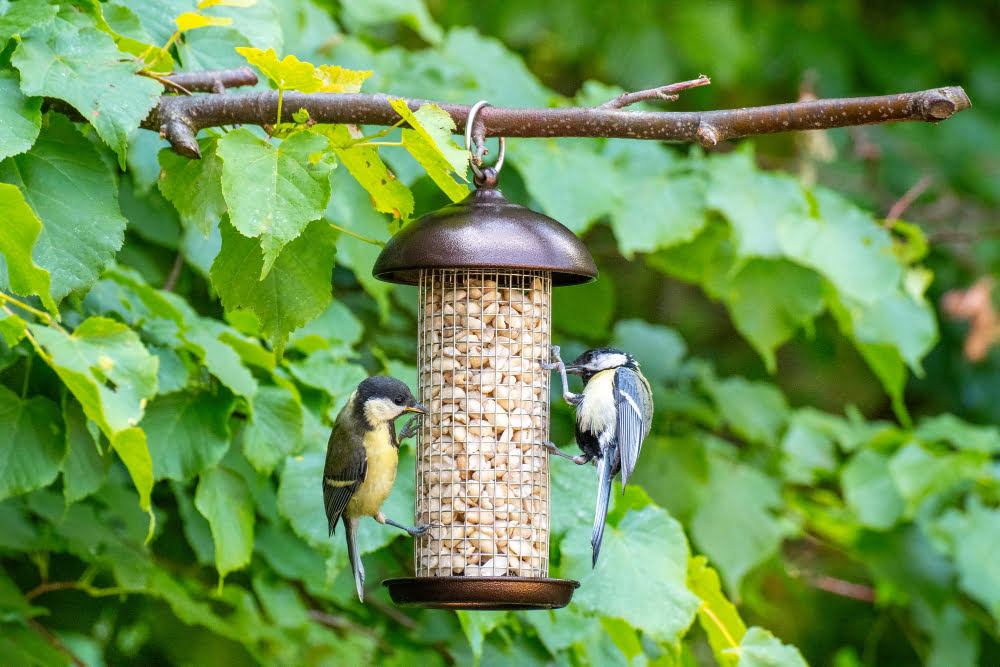
Birds are often attracted to garages due to their instinct to search for food and shelter. Offering meal alternatives in a bird-friendly zone away from the garage can entice them in the right direction, making your garage less attractive.
Here are some key points:
- Install bird feeders strategically around your yard. Ensure they are far enough from the garage, but close enough for you to monitor.
- Choose bird seed suited to the species you have in your area. This will be a strong lure for them.
- Maintain a regular feeding schedule. Consistency will help birds form a habit of visiting the bird feeders rather than the garage.
- Choose a bird feeder that deters other wildlife such as squirrels. You won’t want to attract unwanted pests that could potentially take over your garage.
- Add a birdbath or a flowing water feature as birds are attracted to water for drinking and bathing as well.
Remember, you are creating a more compelling place for them to frequent than your garage. The key to success is making the feeding area more inviting and sustaining than what the garage could offer.
Utilizing Bird Repellent Spray

Bird repellent spray can be an effective tool to deter our feathered friends from making your garage their home. These sprays, often non-toxic, emit smells that are unpleasant to birds, yet harmless to them and other wildlife. Utilizing such a spray involves following a few simple steps:
1. Choose the Right Spray: Not every bird species will react to repellents in the same way. Research the type of bird you’re dealing with to ensure buying a compatible spray.
2. Test Area: Use on a small, inconspicuous area first to ensure it does not cause staining or discoloration.
3. Spray on Key Locations: Apply the repellent on areas where the birds tend to perch, nest, or enter.
4. Reapply Regularly: Rain and wind conditions may dilute the repellent’s effectiveness. Regular application is necessary to maintain its repellent properties.
Safety is of utmost importance while handling such sprays. Ensure you wear gloves and a face mask, keeping the area well-ventilated during application. Avoid contact with the eyes and skin and keep out of reach from children and pets. Always remember – these sprays are deterrents, not guaranteed solutions for keeping the birds away; their effectiveness varies based on the species and environmental factors.
Covering Holes and Potential Entry Points

Faulty construction, weather-induced wear and tear, or regular use might lead to gaps or holes in your garage. From broken windows to cracks in the siding to gaps in weather stripping, any hole greater than half an inch could invite a bird inside.
1. Regular Inspection: Schedule periodic inspections to catch these openings. Look closely at the corners, sidings, windows, and garage doors.
2. Door Seals & Weather Stripping: Ensure door seals are intact. If not, replace them. Refresh weather stripping around windows and doors.
3. Repair Broken Windows: If a window is broken, fix it immediately. For tiny cracks, consider a patch as a temporary solution until full repairs can be made.
4. Patching Cracks: Use a suitable material, such as surface sealer or wood filler, to patch small cracks in walls or sidings.
5. Professional Assessment: If the cracks and gaps are extensive, consider a professional assessment for repairs.
Remember, the goal is to limit entry points so birds don’t see your garage as an accessible shelter. Implementing these measures will give you an edge against birds looking for a home in your garage.
Methods to Keep Birds Out of Your Garage Permanently
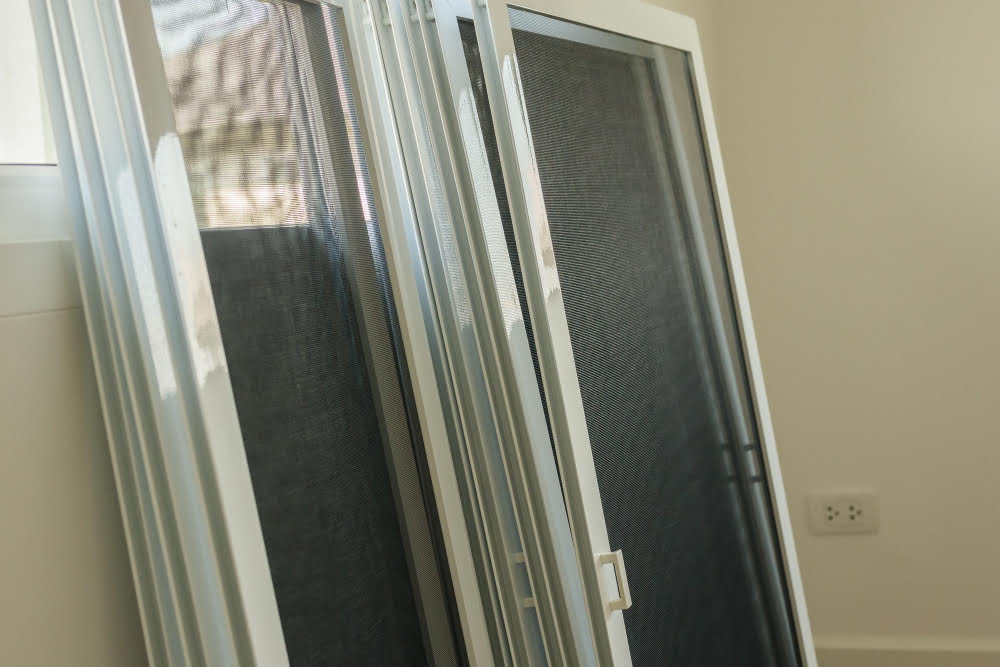
Installing physical barriers often offers the most effective solution. This can be screens or netting over windows and vents, or stripping along the base of the garage door to ensure a secure seal when the door is closed.
A visual deterrent such as a plastic owl or reflective tape can also be remarkably successful. These items simulate a predator, discouraging the birds from taking residence.
Bird spikes can be fitted in areas where birds like to roost. However, it’s important to ensure that they’re used responsibly to not harm the animal.
Lastly, there are sound repellents which emit distress calls and predator noises. While it’s not totally fool-proof, it might make your garage less inviting. Remember to consider your neighbors when opting for this method.
Regardless of the method you choose, frequent inspection and maintenance is key to ensuring these preventative measures stay intact and effective. They need to be durable and able to withstand various weather conditions.
Addressing Accidental Bird Entry: What to Do If a Bird Flies Into Your Garage
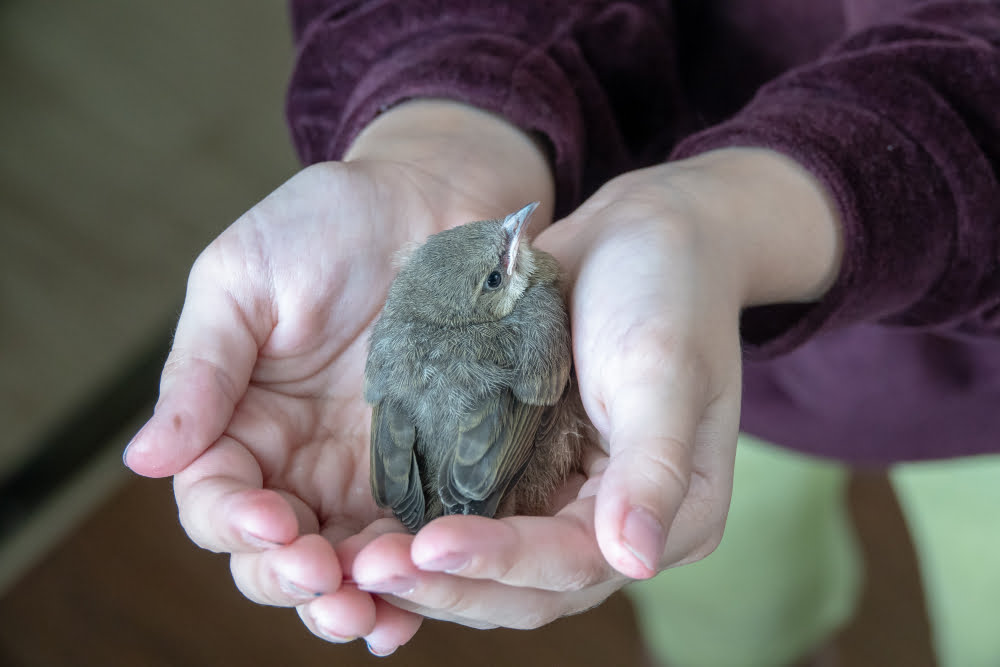
Immediately upon the unanticipated entry of a bird in your garage, refrain from panicking to avoid scaring the bird further into the garage. Remember, the garage may appear like a maze to the bird, provoking fear and stress.
Below are some efficient strategies to handle this peculiar situation:
- 1. Darken the garage but for a single light-source leading outdoors. Frightened, birds naturally seek brightly-lit escape routes.
- 2. If the bird remains hesitant, gentle guidance using a soft object like a broom could reassure it towards the lit exit. Yet, keep a respectful distance to prevent undue stress.
- 3. Should the bird find itself unable to fly due to injury or shock, consider donning gloves and gently placing the bird outside in a safe, quiet location.
- 4. If the bird is unapproachable, professionals or local wildlife agencies can certainly assist in safely handling and relocating the bird.
- 5. Lastly, never forget patience. Give the bird ample time to regain composure and navigate independently towards the light.
FAQ
How do you get a bird to leave?
To encourage a bird to exit your garage, darken the area by closing curtains or window shades, then open an exterior door which allows the bird to follow its natural instinct toward light, and optionally, create a barrier with a sheet to guide its path.
Why are birds flying into my garage?
Birds fly into garages seeking shelter from weather elements or predators, and sometimes due to the availability of food.
How long can a trapped bird survive?
A trapped bird can survive between two to seven days depending on its species.
How do you get a bird out of a building safely?
To safely remove a bird from a building, darken the interior by turning off lights, close off all but one window, which should be fully opened, allowing the bird to eventually gravitate towards the natural light and exit through the open window.
What measures can be taken to prevent birds from entering the garage?
To prevent birds from entering the garage, consider installing bird netting or spikes, using ultrasonic devices, or placing visual deterrents like fake predatory birds.
How can garage design be optimized to discourage bird entry?
To discourage bird entry, optimize garage design by incorporating screens on windows, sealing all openings, and using bird deterrent accessories such as spikes or ultrasonic devices.
What potential hazards can make a garage dangerous for birds?
Potential hazards that can make a garage dangerous for birds include toxic substances, sharp tools, machinery, and poorly ventilated/enclosed spaces that could lead to suffocation or entrapment.